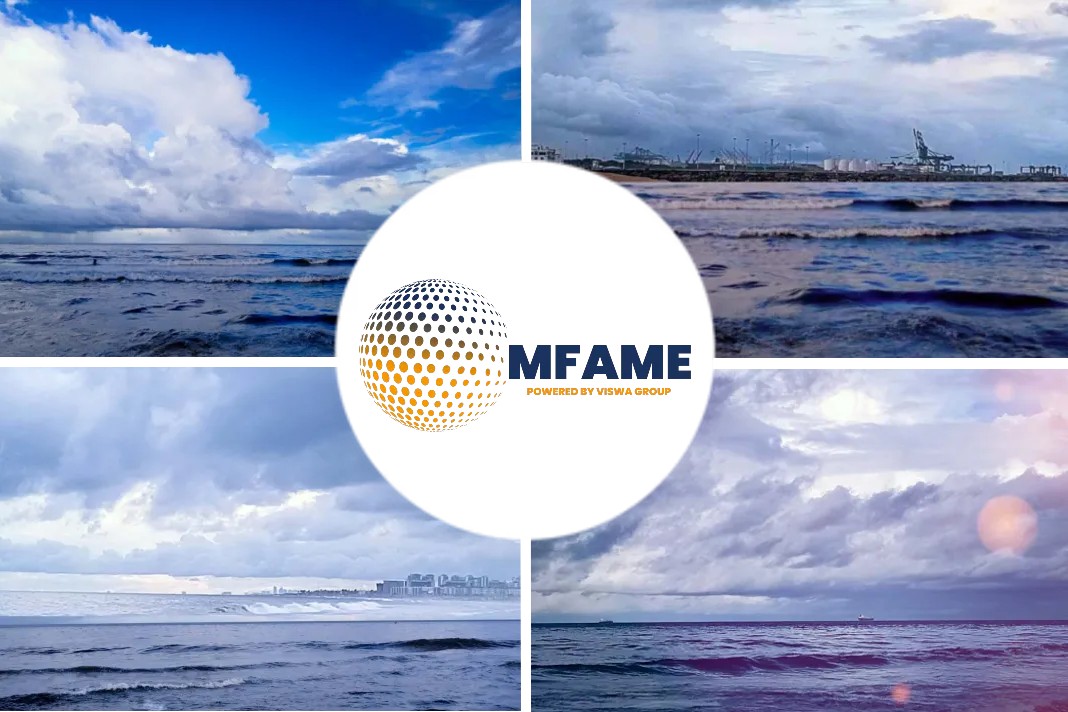According to a riviera maritime media report, a German-led initiative will use a container ship as the first vessel globally to run on synthetic natural gas (SNG) derived from renewable energy
What is it?
MAN Energy Solutions and Wessels Marine GmbH have announced a technical showcase whereby the 2017-LNG retrofitted Wes Amelie, a 1,036-teu feeder container ship, will use liquefied SNG produced from renewable electrical energy as drop-in fuel.
Climate Neutral SNG To Be Used
To demonstrate that SNG can successfully be used as shipping fuel, 20 of the 120 tonnes of LNG that Wes Amelie typically uses per round trip will be replaced by climate-neutral SNG. As a result, CO2 emissions are expected to decline by 56 tonnes for this trip.
The two German-headquartered companies are co-operating on the Wes Amelie project with Germany-based Nauticor, an LNG transportation company, and Danish logistics company Unifeeder, which is chartering the vessel.
How will be the SNG Generated?
German automobile manufacturer Audi’s Power-to-Gas facility in Werlte, where a liquefaction plant is currently under construction, will provide the SNG. The fuel will be generated by wind energy and is 100% climate-neutral. Wes Amelie’s SNG showcase trip will take place after the completion of the liquefaction plant in Q2 2020.
Vessel Owner History of Innovation
The vessel’s owner, Wessels Reederei (Haren/Ems), previously made headlines in 2017 when its MAN 8L48/60B main engine was retrofitted to its current, four-stroke MAN 51/60DF unit that enables dual-fuel operation – the first such conversion of its type.
SNG Done on German Govt. Support?
Wessels Marine managing director Christian Hoepfner said “The Wes Amelie project has always been about demonstrating the technologically doable while pointing out the regulatory actions necessary to make it possible. The initial retrofit to LNG took support from the German government to be financially viable, but it was a huge success for the environment in that it drastically reduced emissions. As a consequence, there now is a retrofit programme in place to make more retrofits happen.”
He continued “In another world-first, we will now demonstrate that SNG can successfully be used to reduce harmful emissions even further as the fuel is climate-neutral. However, the costs are still way too high. Going forward, governments and regulators will have to work together to make this a viable and available option for ship owners.”
German Subsidies Helps in More Conversion
German subsidies would mean more LNG conversions, says Wessels Reederei
Wessels Reederei said it would initiate conversion of more of its fleet of feeder container ships to LNG if it obtains subsidies from the German government for green shipping.
If this assurance was secured, then the shipowner would search for funding to achieve its green shipping goals.
“The German government has opened up funding for these projects and Wessels Marine would look to go for that for 12 ships converted to LNG,” Mr Hoepfner said.
Committed to SNG Trials
In parallel, Wessels Marine has committed to begin trials with SNG on Wes Amelie as an additive to the main LNG fuel in Q2 2020.
“Then we will look at how we can use this in the future to run SNG and LNG in combination. Then we need to look at running Wes Amelie exclusively on SNG.”
How SNG is produced?
SNG is produced when energy from renewable sources converts water to hydrogen. Then, carbon is added from CO2 absorbed from the atmosphere to create methane that is liquefied and transported to the ship bunkering facility.
This process should demonstrate a viable method of vastly reducing CO2 emissions down to 10% of that from heavy fuel oil. However, it is costly, said Mr Hoepfner.
Costs High
“The costs are still way too high,” he said. “But a [decarbonised] future means these solutions need to be considered. SNG will help shipping and IMO meet targets to reduce CO2 emissions by 50%.”
However, Mr Hoepfner thinks shipping needs incentives to achieve these goals.
Making It A Viable Solution?
“Going forward, governments and regulators will have to work together to make this a viable and available option for ship owners.”
MAN PrimeServ head in Augsburg, Germany, Stefan Eefting agrees synthetic fuels derived from renewable energy “will play a crucial role” to reach IMO 2050 goals.
Maritime Energy Transition Milestone
“This is another important milestone and proof of concept for the Maritime Energy Transition, the initiative we have been driving since 2016. We strongly believe that a roadmap based on LNG and SNG as fuels can lead the way to a decarbonised future for shipping”, he said.
Mr Eefting added “To bring down future emissions generated in the global-trade supply chain, synthetic fuels play a crucial role. Especially in shipping, the use of batteries alone is not a viable option and any successful decarbonisation efforts need to address the fuel.”
“We need Power-to-X out of the labs and into the market in order to produce more competitive, renewable fuels by using scaling effects,” said Mr Eefting. “Power-to-X technology allows the generation of 100% climate-neutral natural gas from renewable energy.”
“This technology has tremendous potential and needs to be freed from regulatory burdens and to be developed on an industrial scale to bring down costs.”
MAN Energy Solutions commissioned the Werlte-based methanation plant, in partnership with Audi, in 2013.
While the 6 MW methanation unit is still the largest of its kind in Europe today, MAN now offers a 50 MW EPC Power-to-X solution to ramp up the generation of synthetic fuel.
Did you subscribe to our daily newsletter?
It’s Free! Click here to Subscribe!
Source: Riviera Maritime Media
























